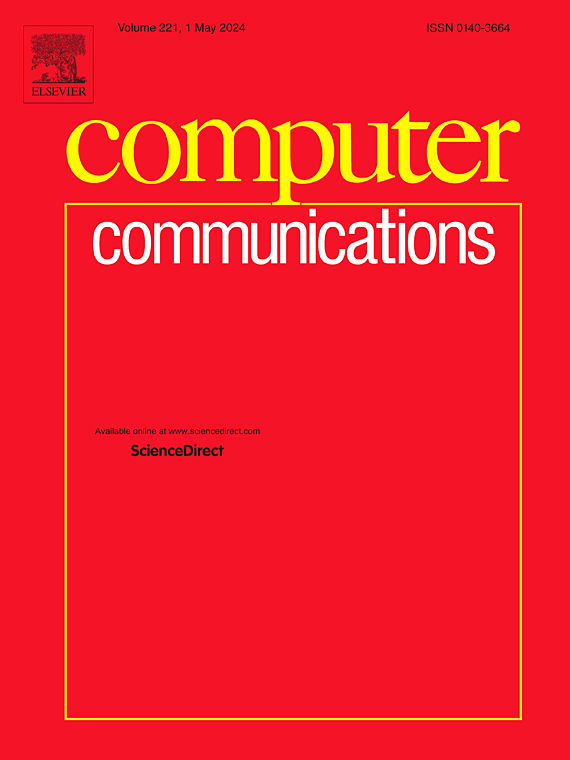基于异构多智能体深度强化学习的移动边缘计算低碳排放任务卸载
IF 4.5
3区 计算机科学
Q1 COMPUTER SCIENCE, INFORMATION SYSTEMS
引用次数: 0
摘要
移动边缘计算是物联网中新兴的计算范式。任务卸载是移动边缘计算中缓解计算资源约束的关键方法。如今,越来越多的任务对计算资源提出了更高的要求。计算资源消耗的增加导致了高碳排放。实现环境友好的移动边缘计算,同时有效地管理低碳任务卸载,这是一个重大挑战。近年来,深度强化学习在许多研究领域都取得了一定的进展。然而,考虑任务卸载过程中碳排放的深度强化学习方法很少。针对移动边缘计算中的碳排放最小化问题,提出了一种基于深度强化学习的低碳排放任务卸载算法。首先,由于移动边缘计算环境中存在不同的基站,我们考虑了具有多个异构代理的移动边缘计算环境。其次,为了最小化碳排放,我们将基站的碳强度作为优化因素。我们总结了最小化碳排放的任务卸载策略,从而实现了碳排放的最小化。此外,我们提出的算法允许用户设备决定自己的任务卸载偏好。根据用户设备的具体要求和偏好,我们提出的算法可以分别动态调整延迟、能耗和碳排放的权重。实验表明,该算法能够准确、快速地完成任务卸载策略,使碳排放最小化。本文章由计算机程序翻译,如有差异,请以英文原文为准。
Heterogeneous multi-agent deep reinforcement learning based low carbon emission task offloading in mobile edge computing
Mobile edge computing is an emerging computing paradigm in the Internet of Things. Task offloading is a critical method in mobile edge computing to alleviate computational resource constraints. Nowadays, the rising number of tasks is placing greater demands on computing resources. The increasing consumption of computing resources leads to high carbon emission. Achieving environmentally friendly mobile edge computing while effectively managing low-carbon task offloading poses a significant challenge. Recently, deep reinforcement learning has made certain progress in many research fields. However, there are few deep reinforcement learning methods that consider the carbon emission in task offloading. In this paper, we propose a deep reinforcement learning based low carbon emission task offloading algorithm for minimizing carbon emission in mobile edge computing. Firstly, since different base stations exist in the mobile edge computing environment, we consider the mobile edge computing environment with multiple heterogeneous agents. Secondly, to minimize carbon emission, we consider the carbon intensity of the base station as an optimization factor. We conclude the task offloading strategy to minimize carbon emission, consequently achieving the minimization of carbon emission. Moreover, our proposed algorithm allows user devices to decide their own preference for task offloading. Based on the specific requirements and preferences of user devices, our proposed algorithm can dynamically adjust the weights of delay, energy consumption, and carbon emission, respectively. Experiments indicate that the proposed algorithm can accurately and quickly conclude the task offloading strategy to minimize carbon emission.
求助全文
通过发布文献求助,成功后即可免费获取论文全文。
去求助
来源期刊

Computer Communications
工程技术-电信学
CiteScore
14.10
自引率
5.00%
发文量
397
审稿时长
66 days
期刊介绍:
Computer and Communications networks are key infrastructures of the information society with high socio-economic value as they contribute to the correct operations of many critical services (from healthcare to finance and transportation). Internet is the core of today''s computer-communication infrastructures. This has transformed the Internet, from a robust network for data transfer between computers, to a global, content-rich, communication and information system where contents are increasingly generated by the users, and distributed according to human social relations. Next-generation network technologies, architectures and protocols are therefore required to overcome the limitations of the legacy Internet and add new capabilities and services. The future Internet should be ubiquitous, secure, resilient, and closer to human communication paradigms.
Computer Communications is a peer-reviewed international journal that publishes high-quality scientific articles (both theory and practice) and survey papers covering all aspects of future computer communication networks (on all layers, except the physical layer), with a special attention to the evolution of the Internet architecture, protocols, services, and applications.
 求助内容:
求助内容: 应助结果提醒方式:
应助结果提醒方式:


